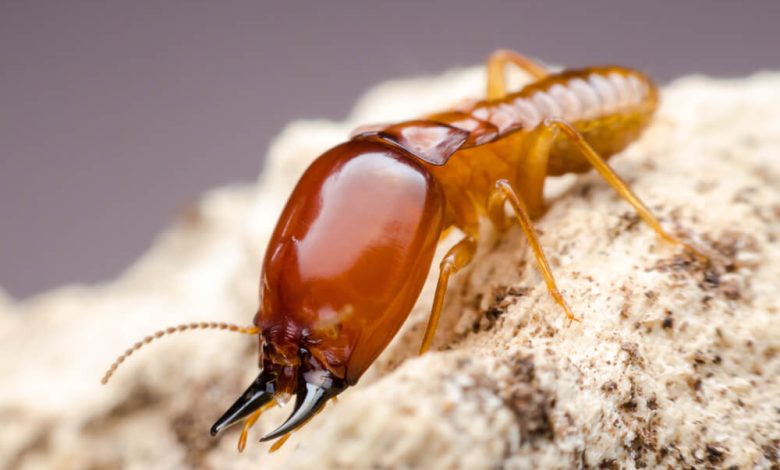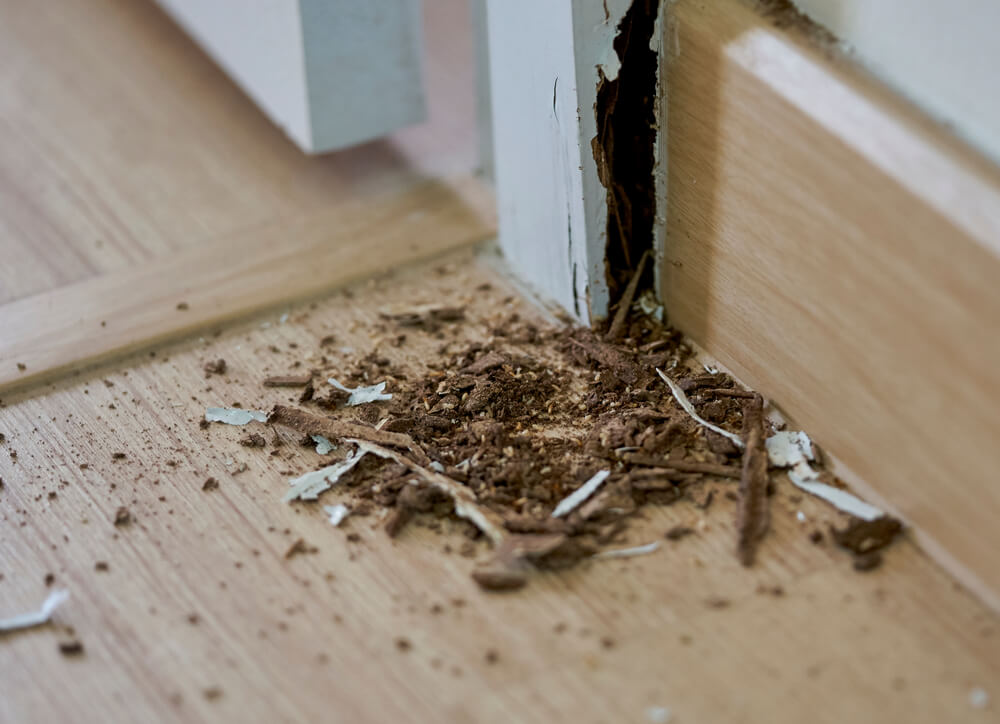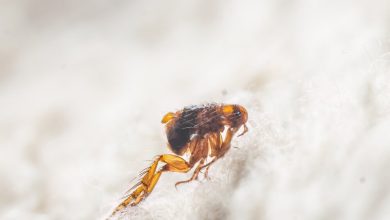What Do Termites Look Like and How to Get Rid of Them

Termites threaten home structural integrity. Recognizing infestation signs and types helps homeowners protect their property. This guide covers identifying termite species, early warning signs, and natural and chemical eradication methods. It also offers preventative measures to keep termites away. Read on for essential knowledge on combating and preventing termite infestations effectively.
The Three Main Types of Termites and Their Appearance
Termites are often a homeowner’s worst nightmare due to the extensive damage they can cause. Understanding the three main types of termites and their appearance is crucial for effective identification and control.
Subterranean Termites
Subterranean termites are among the most destructive pests. These termites typically build their colonies underground and create mud tubes to access above-ground food sources. They have a pale, creamy coloration, with workers being about 1/8 inch long and soldiers slightly larger with darker, more pronounced mandibles. The reproductive subterranean termites, known as swarmers or alates, have dark brown or black bodies with two pairs of wings of equal length.
Drywood Termites
Drywood termites differ from their subterranean counterparts in that they do not require contact with soil. Instead, they infest dry wood structures such as furniture and framing within buildings. These termites are generally larger than subterranean varieties, ranging from 3/8 to 1 inch in length depending on their caste (worker, soldier, or reproductive). Drywood termite workers are light brown or cream-colored, while soldiers have large mandibles and a darker head. Reproductive drywood termites also possess wings but tend to be more reddish-brown.
Dampwood Termites
As their name suggests, dampwood termites thrive in moist environments and typically infest decaying wood that has high moisture content. They are generally larger than both subterranean and drywood species; soldiers can grow up to 5/8 inch long while reproductives may reach up to an inch in length. Dampwood termite workers usually exhibit a creamy white color similar to other termite workers but appear more robust due to their size. Soldiers have noticeably large heads equipped with formidable jaws.
By recognizing these three main types of termites and understanding what they look like, homeowners can take proactive steps toward preventing infestations and mitigating potential damage caused by these persistent pests.
How to Identify a Termite Infestation in Your Home

Identifying a termite infestation in your home early on can save you significant time, money, and stress. Here are some key signs of termite infestation to watch out for:
- Termite Droppings: Also known as frass, termite droppings are tiny pellets that termites leave behind. These droppings often resemble sawdust or coffee grounds and can be found near the nest or where termites have been feeding.
- Mud Tubes: Termites construct mud tubes to protect themselves from predators and maintain moisture as they travel between their colony and food sources. These tubes are typically found along the foundation of your home or other surfaces leading up to wood structures.
- Damaged Wood: Termites feed on cellulose in wood, causing noticeable damage over time. Look for wood that sounds hollow when tapped or has unexplained cracks or holes. In severe cases, you might notice wooden structures that appear blistered or weakened.
- Wings Shed by Termites: Reproductive termites, also known as swarmers, shed their wings after mating flights when they establish new colonies. Finding discarded wings around windowsills, doorways, or other entry points is a strong indication of a nearby termite presence.
By staying vigilant for these signs of termite infestation, you can take swift action to address any issues before they escalate into more significant problems for your home’s structural integrity.
The Best Methods for Getting Rid of Termites Naturally
When it comes to dealing with termites, many homeowners prefer natural termite control methods to avoid the use of harsh chemicals. Understanding how to get rid of termites naturally can help protect your home while maintaining a healthy environment.
One effective DIY termite treatment is the use of nematodes, which are small parasitic worms that feed on termites. These beneficial nematodes can be introduced into the soil around your home, where they will seek out and destroy termite colonies.
Another natural method involves creating a barrier using diatomaceous earth. This fine powder is made from fossilized algae and works by cutting through the exoskeletons of termites, causing them to dehydrate and die. Simply sprinkle diatomaceous earth around the perimeter of your home or in areas where you suspect termite activity.
Orange oil is another popular natural remedy for termite infestations. Extracted from orange peels, this oil contains d-limonene, which is lethal to termites on contact. You can apply orange oil directly to affected wood or inject it into termite galleries using a syringe.
Consider using boric acid as a natural termite deterrent. Boric acid can be mixed with water and sprayed onto infested areas or applied as a dust in crawl spaces and other hard-to-reach locations. This substance disrupts the digestive systems of termites, ultimately leading to their demise.
Chemical Treatments and Professional Extermination Options for Severe Infestations
When dealing with severe termite infestations, chemical treatments and professional extermination options become essential to protect your property. One of the most effective methods involves the use of bait stations for termites. These bait stations are strategically placed around your home and contain a substance that attracts termites. Once consumed, the bait disrupts their growth and eventually eliminates the colony.
Another powerful solution is the application of liquid termiticides. These chemicals are typically applied to the soil around your home’s foundation, creating a barrier that kills termites on contact or when they ingest treated materials. Liquid termiticides can provide long-lasting protection and are particularly effective for both pre-construction and post-construction treatments.
While DIY methods might offer temporary relief, hiring professional exterminators for termite control ensures comprehensive management of infestations. Professional exterminators have access to advanced tools and treatments that are not available over-the-counter. They conduct thorough inspections, identify infestation sources, and apply targeted treatments tailored to your specific situation.
Combining these chemical treatments with professional expertise offers a robust defense against severe termite infestations, ensuring long-term protection for your property.
Preventative Measures to Keep Termites Away from Your Home Permanently
Termite infestations can cause significant damage to your home if not addressed promptly. However, by implementing some effective termite prevention tips, you can safeguard your property and ensure these pests do not return.
1. Regular Inspections: Conducting regular inspections is crucial for early detection of termite activity. Engage a professional pest control service to perform thorough checks at least once a year. They can identify potential problem areas and offer expert advice on how to stop termites from coming back.
2. Moisture Control: Termites thrive in moist environments, so it’s essential to keep your home dry. Fix any leaks in plumbing or roofing promptly and ensure proper drainage around the foundation of your house. Using dehumidifiers in damp areas like basements can also help reduce moisture levels.
3. Proper Ventilation: Good airflow prevents excess moisture buildup that attracts termites. Ensure that crawl spaces, attics, and other enclosed areas are well-ventilated by installing vents or using fans.
4. Barrier Treatments: Applying chemical barriers around the foundation of your home can deter termites from entering. These treatments create an unbreachable line that termites cannot cross without being killed or repelled.
5. Wood Maintenance: Since termites feed on wood, it’s important to maintain all wooden structures properly:
- Use treated wood for construction.
- Keep firewood and lumber away from the house.
- Seal any cracks or holes in wooden elements with appropriate sealants.
- Regularly paint or stain exposed wood surfaces to protect them from weathering.
6. Landscaping Practices: Proper landscaping can also play a role in termite prevention:
- Avoid planting trees and shrubs too close to the house.
- Ensure mulch is kept at least 15 inches away from the foundation.
- Trim tree branches and bushes regularly so they do not touch the structure of your home.
7. Remove Debris: Clear out any debris such as dead trees, stumps, branches, or leaves near your property since these serve as food sources for termites.
By incorporating these termite prevention tips into your regular home maintenance routine, you can effectively protect against pests and maintain a termite-free environment permanently.




